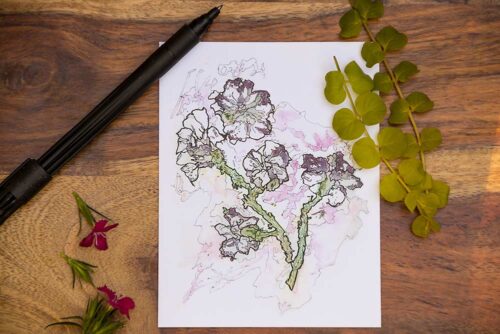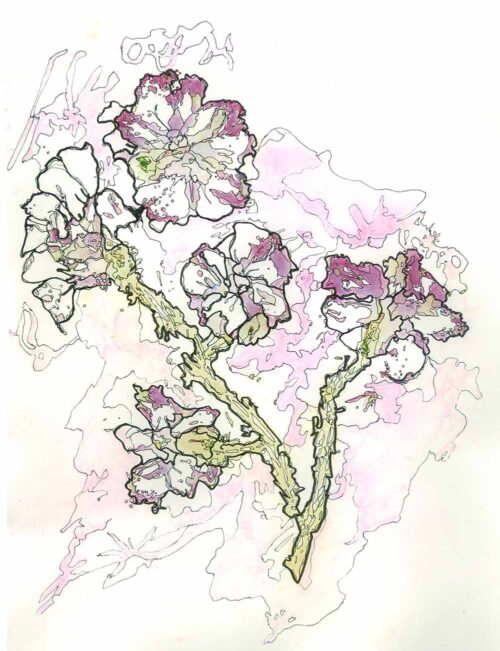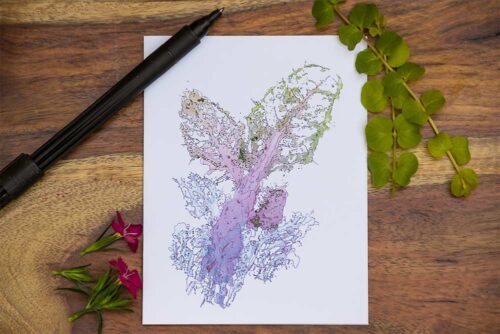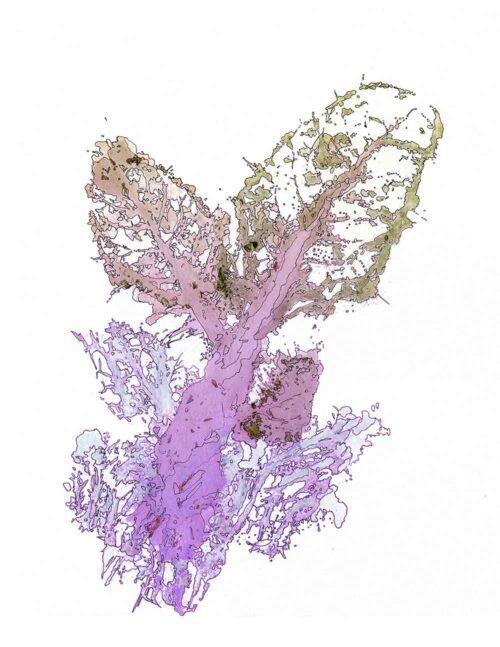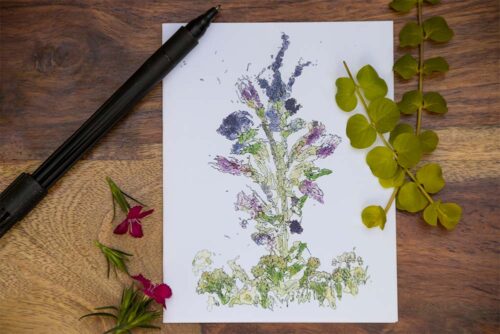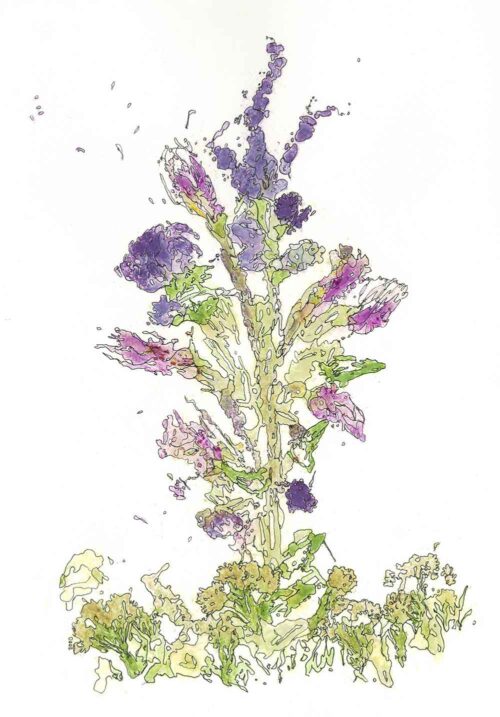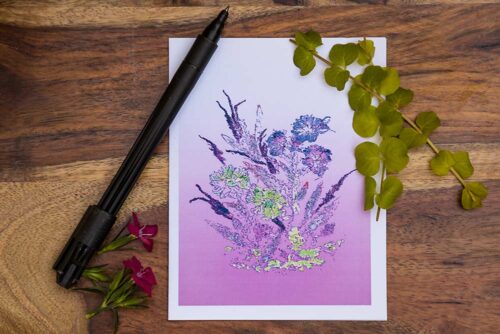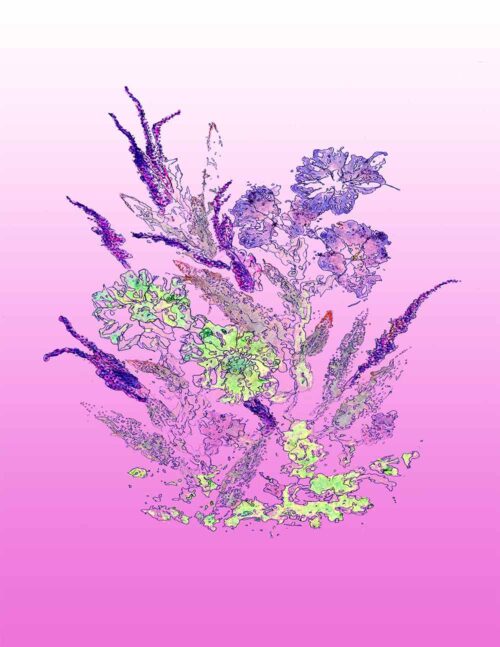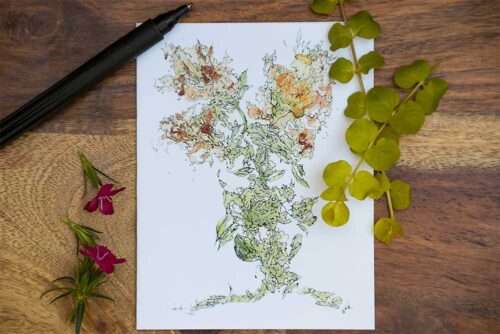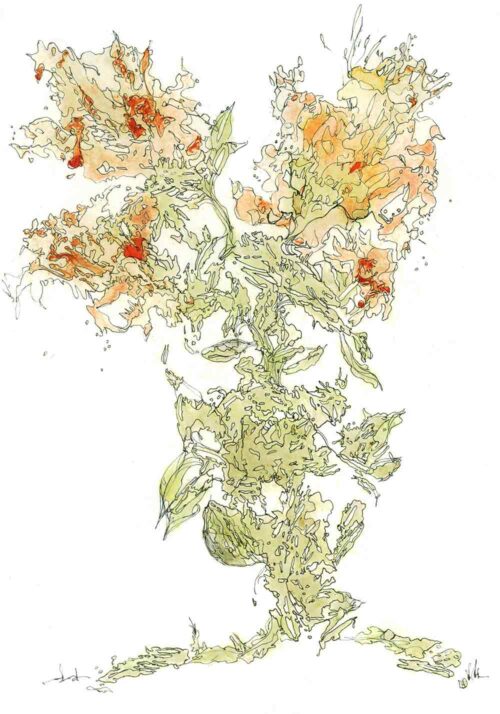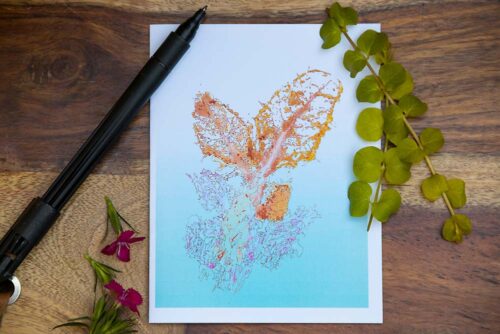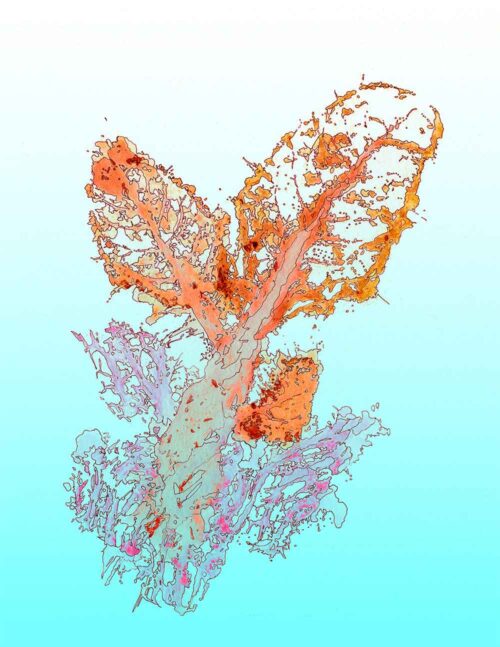-
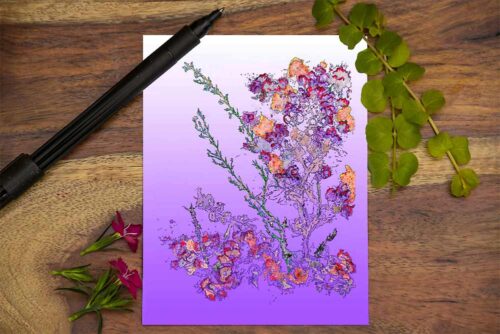
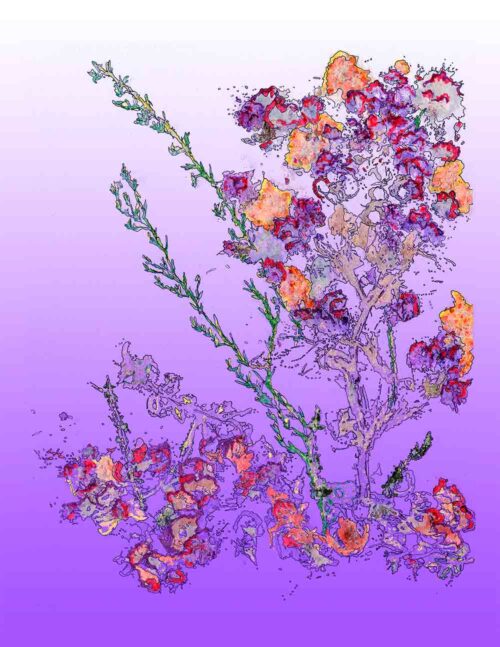 This piece is a very colorful version of a piece from the flower abrasion series. The original piece was made from smashed begonia and grass bits on watercolor paper. India ink and watercolor washes were applied and the piece was scanned. It was digitally enhanced, allowing us to see stalks of sea algae and coral sway underwater in the depth of the bluish purple sea.
This piece is a very colorful version of a piece from the flower abrasion series. The original piece was made from smashed begonia and grass bits on watercolor paper. India ink and watercolor washes were applied and the piece was scanned. It was digitally enhanced, allowing us to see stalks of sea algae and coral sway underwater in the depth of the bluish purple sea. -
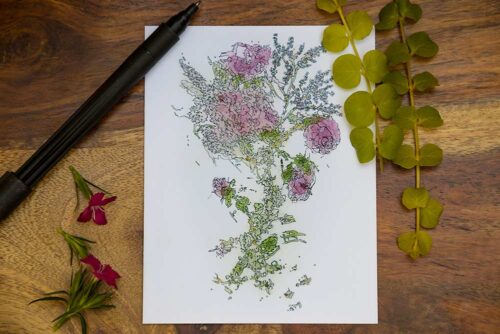
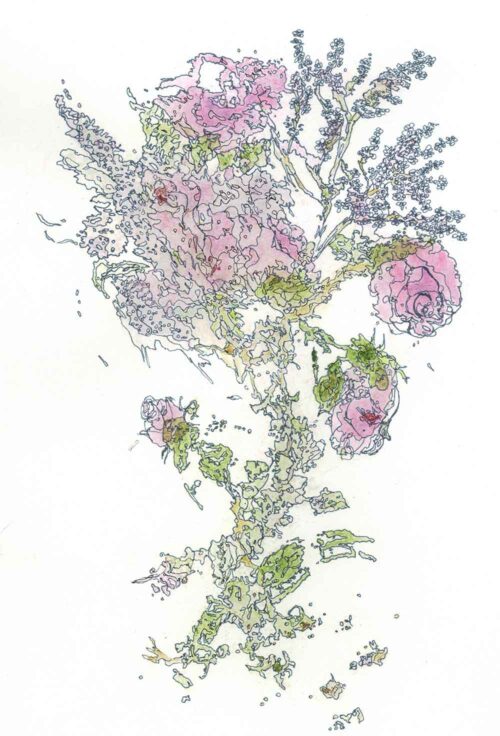 The dried flower look of this piece was accomplished with the use of tiny bits of pink rose petals. They were smashed with a hammer to exude their pigment onto watercolor paper. Lavender was also pounded and India ink combined the petals into buds and blooms. The ink also added sweet whimsical freehand tiny purple petals on their stems.
The dried flower look of this piece was accomplished with the use of tiny bits of pink rose petals. They were smashed with a hammer to exude their pigment onto watercolor paper. Lavender was also pounded and India ink combined the petals into buds and blooms. The ink also added sweet whimsical freehand tiny purple petals on their stems. -
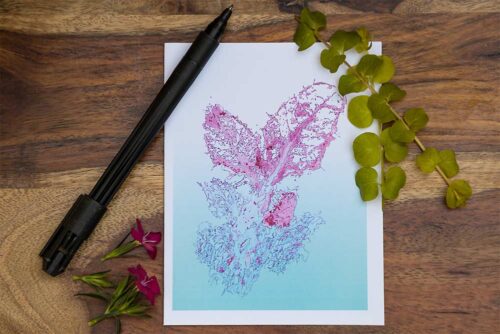
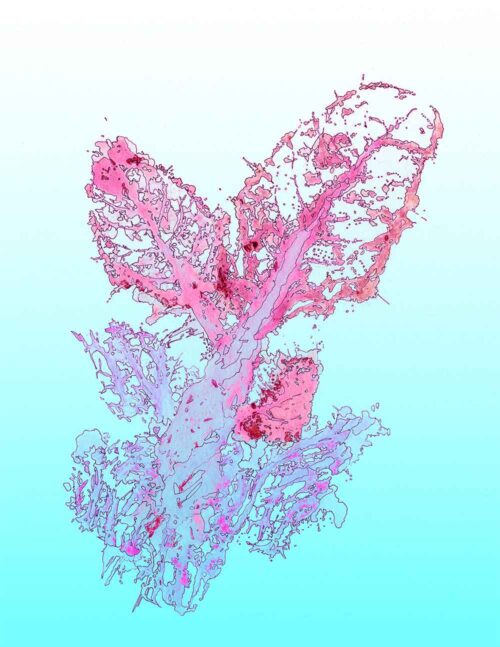 This is a digitally enhanced version of an original piece from the flower abrasion series. The original piece of smashed cabbage and chard was scanned then a blue fading background was added. The leaves changed to pink, and the bits of the original plan remnants dried on the page and created these red saturated areas.
This is a digitally enhanced version of an original piece from the flower abrasion series. The original piece of smashed cabbage and chard was scanned then a blue fading background was added. The leaves changed to pink, and the bits of the original plan remnants dried on the page and created these red saturated areas. -
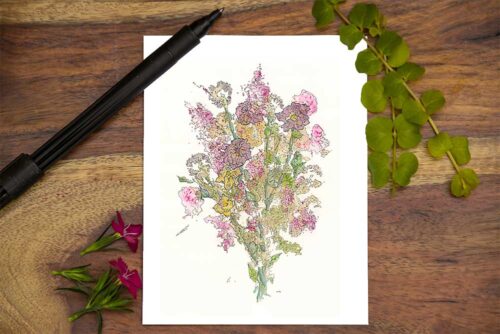
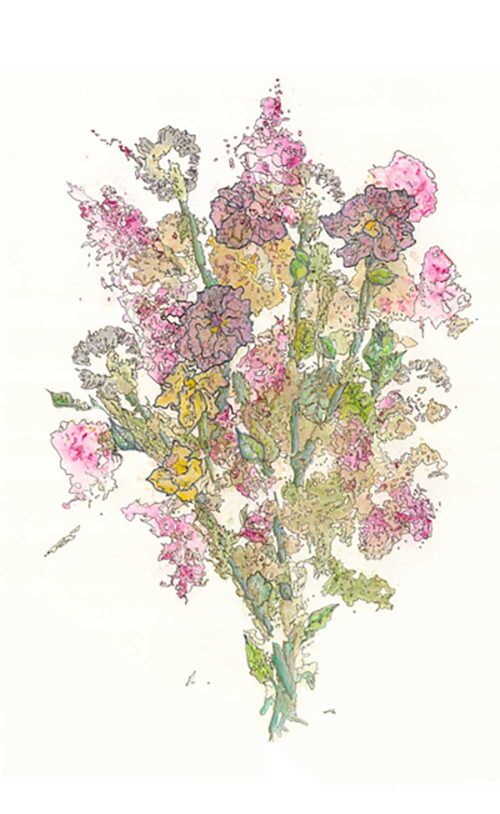 An explosion of color burst out of pounded out flower petals and leaf bits. Multiple layers of carnation, salvia, dianthus, and hydrangea are pounded with a hammer. India ink is used to outline the various color elements on the watercolor paper. Colored pencils further define the stems and leaves to create the sense of this flower bundle.
An explosion of color burst out of pounded out flower petals and leaf bits. Multiple layers of carnation, salvia, dianthus, and hydrangea are pounded with a hammer. India ink is used to outline the various color elements on the watercolor paper. Colored pencils further define the stems and leaves to create the sense of this flower bundle. -
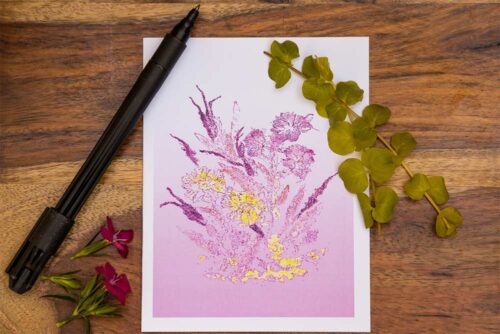
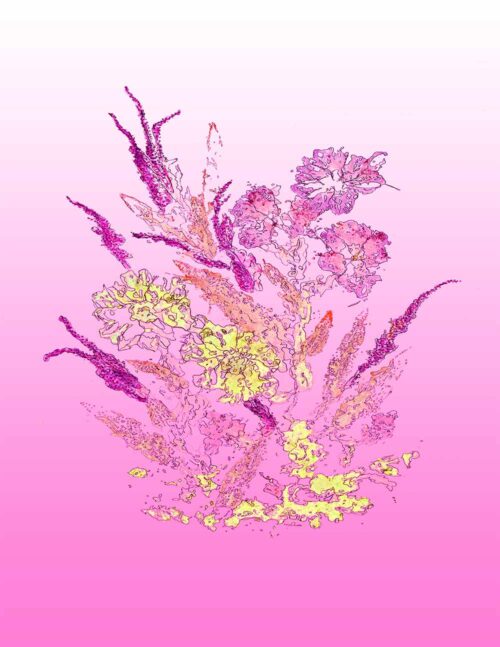 The original design was made of rose, carnation, and leaf bits which were pounded out with a hammer onto watercolor paper. India ink drawings added to the design which was scanned and enhanced digitally. Saturations were deepened and a color background added, creating a lime green pop against a graduation of purple.
The original design was made of rose, carnation, and leaf bits which were pounded out with a hammer onto watercolor paper. India ink drawings added to the design which was scanned and enhanced digitally. Saturations were deepened and a color background added, creating a lime green pop against a graduation of purple. -
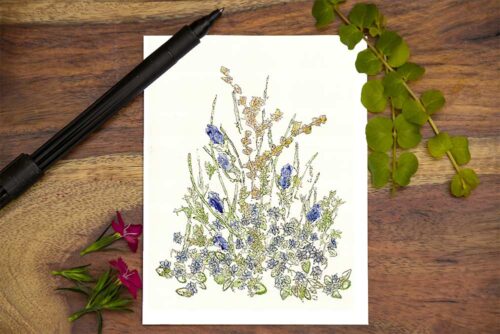
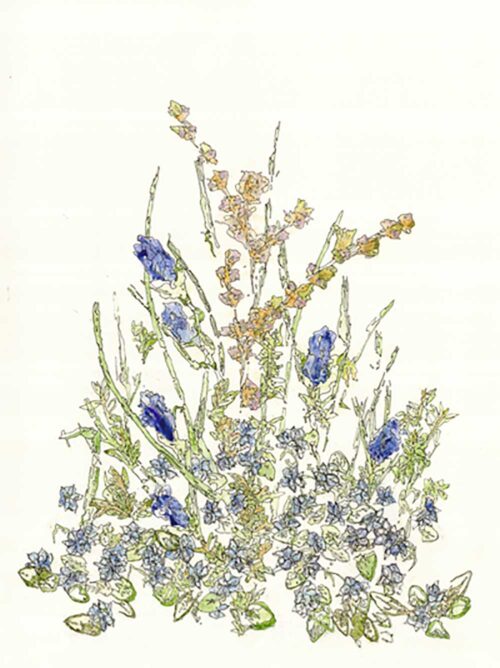 In the Spring, the purple berries of the grape hyacinth bloom on the short stalk of the plant. Amazingly, the color the berries exude when smashed is this vibrant blue! On this quiet morning they were combined with grass findings and a stem from the pink almond bush. All sorts of delicate hand-drawn flowers dribble across the bottom of the page to welcome the arrival of Spring.
In the Spring, the purple berries of the grape hyacinth bloom on the short stalk of the plant. Amazingly, the color the berries exude when smashed is this vibrant blue! On this quiet morning they were combined with grass findings and a stem from the pink almond bush. All sorts of delicate hand-drawn flowers dribble across the bottom of the page to welcome the arrival of Spring. -
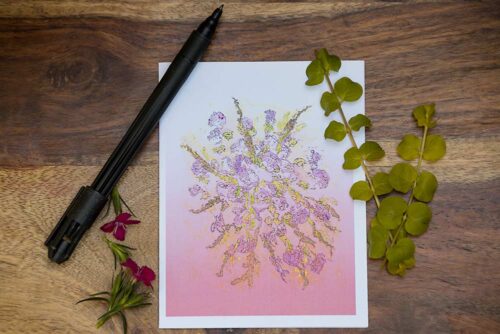
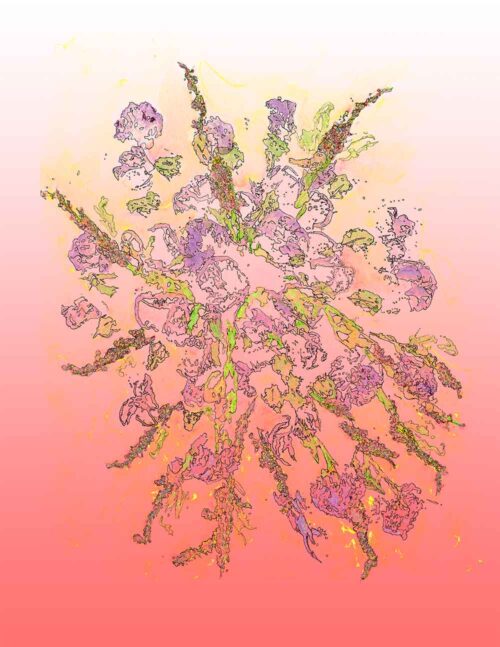 This piece began with bits of carnation, begonia, lavender, rose petals, and leaves. They were abraded onto watercolor paper with a hammer. India ink made sense of the blobs of color. The original piece was scanned and digitally enhanced with layers of pink, salmon, and yellow creating a romantic cascade.
This piece began with bits of carnation, begonia, lavender, rose petals, and leaves. They were abraded onto watercolor paper with a hammer. India ink made sense of the blobs of color. The original piece was scanned and digitally enhanced with layers of pink, salmon, and yellow creating a romantic cascade. -
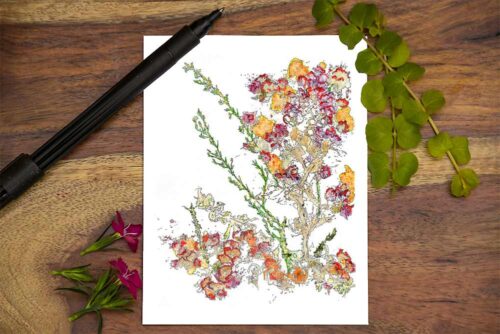
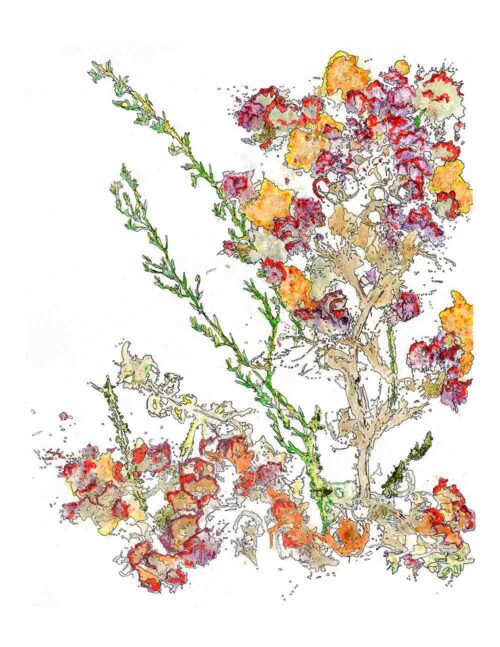 This is a lovely example of flower abrasion. It was created by smashing bits of begonia and grasses onto watercolor paper with a hammer. India ink found all the small bits of pigment that exploded outward as well as defined the plants themselves. Watercolor wash was used throughout the piece. It looks like a sea plant found along the shore as the tide recedes.
This is a lovely example of flower abrasion. It was created by smashing bits of begonia and grasses onto watercolor paper with a hammer. India ink found all the small bits of pigment that exploded outward as well as defined the plants themselves. Watercolor wash was used throughout the piece. It looks like a sea plant found along the shore as the tide recedes. -
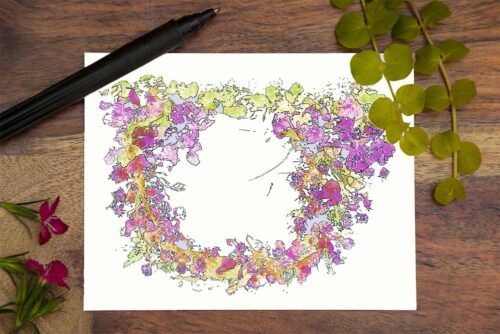
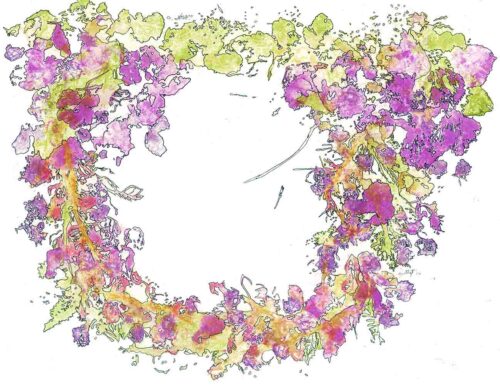 The purple pigment in this wreath is derived from red everblooming rose petal bits. The flower abrasion technique was used on the rose petal bits, leaf bits, and stems. You can clearly see some blobs of color that have been surrounded with India ink to create this overarching wreath. No additional coloration is added to this amazing stunner! Brides might want to consider personalizing the center of the wreath.
The purple pigment in this wreath is derived from red everblooming rose petal bits. The flower abrasion technique was used on the rose petal bits, leaf bits, and stems. You can clearly see some blobs of color that have been surrounded with India ink to create this overarching wreath. No additional coloration is added to this amazing stunner! Brides might want to consider personalizing the center of the wreath. -
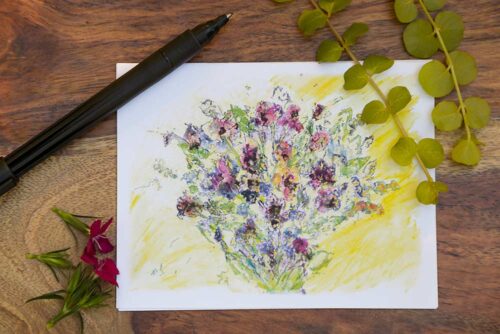
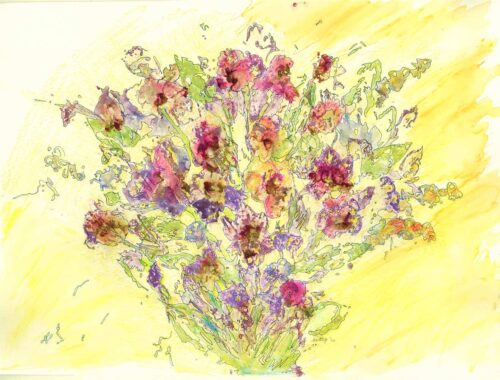 This is one of the artist's favorites of the flower abrasion series. It was made by smashing and rolling bits of the red rose petals onto watercolor paper. Fragments of the flowers dried on the paper. Bits of leaves and grasses were abraded as well. India ink sought out form in the midst of the blobs of color. Light watercolor washes were added to allow the sun to push through.
This is one of the artist's favorites of the flower abrasion series. It was made by smashing and rolling bits of the red rose petals onto watercolor paper. Fragments of the flowers dried on the paper. Bits of leaves and grasses were abraded as well. India ink sought out form in the midst of the blobs of color. Light watercolor washes were added to allow the sun to push through.
